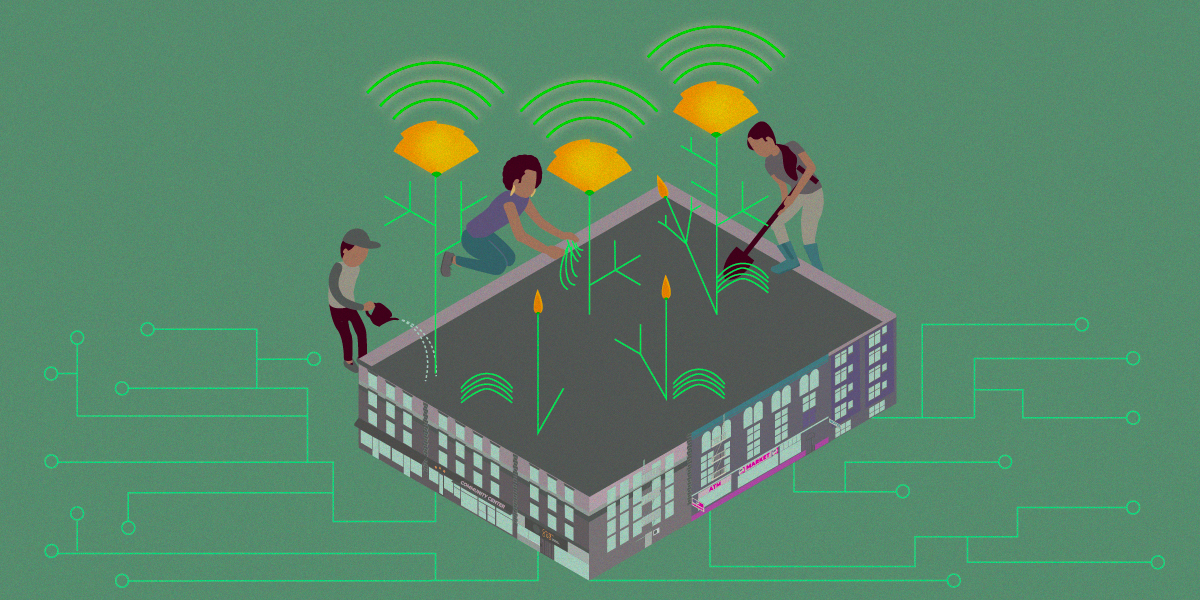[ad_1]
Digital security training can feel overwhelming, and not everyone will have access to new apps, new devices, and new tools. There also isn’t one single system of digital security training, and we can’t know the security plans of everyone we communicate with—some people might have concerns about payment processors preventing them from obtaining fees for their online work, whilst others might be concerned about doxxing or safely communicating sensitive medical information.
This is why good privacy decisions begin with proper knowledge about your situation and a community-oriented approach. To start, explore the following questions together with your friends and family, organizing groups, and others:
- What do we want to protect? This might include sensitive messages, intimate images, or information about where protests are organized.
- Who do we want to protect it from? For example, law enforcement or stalkers.
- How much trouble are we willing to go through to try to prevent potential consequences? After all, convincing everyone to pivot to a different app when they like their current service might be tricky!
- Who are our allies? Besides those who are collaborating with you throughout this process, it’s a good idea to identify others who are on your side. Because they’re likely to share the same threats you do, they can be a part of your protection plans.
This might seem like a big task, so here are a few essentials:
Use Secure Messaging Services for Every Communication
Private communication is a fundamental human right. In the online world, the best tool we have to defend this right is end-to-end encryption, ensuring that only the sender and recipient of any communication have access to the content. But this protection does not reach its full potential without others joining you in communicating on these platforms.
Of the most common messaging apps, Signal provides the most extensive privacy protections through its use of end-to-end encryption, and is available for download across the globe. But we know it might not always be possible to encourage everyone in your network to transition away from their current services. There are alternatives, though. WhatsApp, one of the most popular communication platforms in the world, uses end-to-end encryption, but collects more metadata than Signal. Facebook Messenger now also provides end-to-end encryption by default in one-on-one direct messages.
Specific privacy concerns remain with group chats. Facebook Messenger has not enabled end-to-end encryption for chats that include more than two people, and popular platforms like Slack and Discord similarly do not provide these protections. These services may appear more user-friendly in accommodating large numbers, but in the absence of real privacy protections, make sure you consider what is being communicated on these sites and use alternative messaging services when talking about sensitive topics.
As a service’s user base gets larger and more diverse, it’s less likely that simply downloading and using it will indicate anything about a particular user’s activities. For example, the more people use Signal, the less those seeking reproductive health care or coordinating a protest would stand out by downloading it. So beyond protecting just your communications, you’re building up a user base that can protect others who use encrypted, secure services and give them the shield of a crowd.
It also protects your messages from being available for law enforcement should they request it from the platforms you use. In choosing a platform that protects our privacy, we create a space from safety and authenticity away from government and corporate surveillance.
For example, prosecutors in Nebraska used messages sent via Facebook Messenger (prior to the platform enabling end-to-end encryption by default) as evidence to charge a mother with three felonies and two misdemeanors for assisting her daughter with an abortion. Given that someone known to the family reported the incident to law enforcement, it’s unlikely using an end-to-end encrypted service would have prevented the arrest entirely, but it would have prevented the contents of personal messages turned over by Meta from being used as evidence in the case.
Beyond this, it’s important to know the privacy limitations of the platforms you communicate on. For example, while a secure messaging app might prevent government and corporate eavesdroppers from snooping on conversations, that doesn’t stop someone you’re communicating with from taking screenshots, or the government from attempting to compel you (or your contact) to turn over your messages yourselves. Secure messaging apps also don’t protect when someone gets physical access to an unlocked phone with all those messages on it, which is why you may want to consider enabling disappearing message features for certain conversations.
Consider The Content You Post On Social Media
We’re all interconnected in this digital age. Even without everyone having access to their own personal device or the internet, it is pretty difficult to completely opt out of the online. One person’s decision to upload a picture to a social media platform may impact another person without the second even knowing it, such as an association with a movement or a topic that you don’t want to be public knowledge.
Talk with your friends about the potentially sensitive data you reveal about each other online. Even if you don’t have a social media account, or if you untag yourself from posts, friends can still unintentionally identify you, report your location, and make their connections to you public. This works in the offline world too, such as sharing precautions with organizers and fellow protesters when going to a demonstration, and discussing ahead of time how you can safely document and post the event online without exposing those in attendance to harm.
It’s important to carefully consider the tradeoffs between publicity and privacy when it comes to social media. If you’re promoting something important that needs greater reach, it may be more worth posting to the more popular platforms that undermine user privacy. To do so, it’s vital that you compartmentalize your personal information (registration credentials, post attribution, friends list, etc) away from these accounts.
If you are organising online or conversing on potentially sensitive issues, choose platforms that limit the amount of information collected and tracking undertaken. We know this is not always possible—perhaps people cannot access different applications, or might not have interest in downloading or using a different service. In this scenario, think about how you can protect your community on the platform you currently engage on. For example, if you currently use Facebook for organizing, work with others to keep your Facebook groups as private and secure as Facebook allows.
Think About Cloud Servers as Other People’s Computers
For our online world to function, corporations use online servers (often referred to as the cloud) to store the mass amounts of data collected from our devices. When we back up our content to these cloud services, corporations may run automated tools to check the content being stored, including scanning all our messages, pictures, and videos. The best case scenario in the event of a false flag is that your account is temporarily blocked, but worst case could see your entire account deleted and/or legal action initiated for perceivably illegal content.
For example, in 2021 a father took pictures of son’s groin area and sent these to a health care provider’s messaging service. Days later, his Google account was disabled because the photos constituted a “a severe violation of Google’s policies and might be illegal,” with an attached link flagging “child sexual abuse and exploitation” as one of the possible reasons. Despite the photos being taken for medical purposes, Google refused to reinstate the account, meaning that the father lost access to years of emails, pictures, account login details, and more. In a similar case, a father in Houston took photos of his child’s infected intimate parts to send to his wife via Google’s chat feature. Google refused to reinstate this account, too.
The adage goes, “there are no clouds, just other peoples’ computers.” It’s true! As countless discoveries over the years have revealed, the information you share on Slack at work is on Slack’s computers and made accessible to your employer. So why not take extra care to choose whose computers you’re trusting with sensitive information?
If it makes sense to back up your data onto encrypted thumb drives or limited cloud services that provide options for end-to-end encryption, then so be it. What’s most important is that you follow through with backing it up. And regularly!
Assign Team Roles
Adopting all of these best practices can be daunting, we get it. Every community is made up of people with different strengths, so with some consideration you can make smart decisions about who does what for the collective privacy and security. Once these tasks are broken down into smaller, more easily done tasks, it’s easier for a group to accomplish together. As familiarity with these tasks grows, you’ll realize you’re developing a team of experts, and after some time, you can teach each other.
Create Incident Response Plans
Developing a plan for if or when something bad happens is a good practice for anyone, but especially a community of people who face increased risk. Since many threats are social in nature, such as doxxing or networked harassment, it’s important to strategize with your allies around what to do in the event of such things happening. Doing so before an incident occurs is much easier than when you’re presently facing a crisis.
Only you and your allies can decide what belongs on such a plan, but some strategies might be:
- Isolating the impacted areas, such as shutting down social media accounts and turning off affected devices
- Notifying others who may be affected
- Switching communications to a predetermined more secure alternative
- Noting behaviors of suspected threats and documenting these
- Outsourcing tasks to someone further from the affected circle who is already aware of this potential responsibility.
Everyone’s security plans and situations will always be different, which is why we often say that security and privacy are a state of mind, not a purchase. But the first step is always taking a look at your community and figuring out what’s needed and how to get everyone else on board.
[ad_2]
Source link


